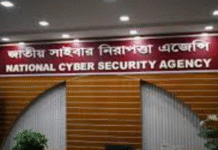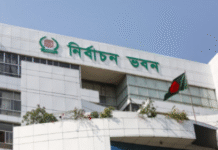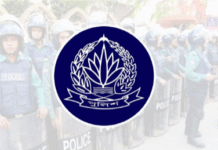ThePrint revisits events that led to the 1994 Surat plague and how the city emerged as one of India’s cleanest in the years to come.

New Delhi: It was the morning of 21 September 1994 when Vibha Marfatia and her husband Saumil were woken up by their neighbours in Surat.
“Don’t drink the water…people are dying,” she remembers them as saying.
On 24 September 1994, the situation deteriorated so much that Vibha, Saumil and their two young children left Surat, undertaking the long journey to Mumbai via Saputara in Gujarat.
It wasn’t only the Marfatias who left town that September 26 years ago. In nearly two days, over 200,000 people had left Surat. It was one of the biggest migrations since the 1947 Partition — 60 per cent of the city’s population had left town in the span of few days.
The rumour, meanwhile, had spread like wildfire. In Mumbai, neighbours of their relative with whom the Marfatias were putting up requested the family to leave after noticing their car had a Gujarat registration plate, recalls Vibha.
Surat and its residents had become pariahs everywhere in the country after the city administration reported that a patient died of symptoms of the pneumonic plague — a highly-contagious bacterial disease and the most virulent form that is invariably fatal unless treated early.
As many as 832 people were suspected to have been infected by pneumonic plague in Gujarat and another 400 in Maharashtra. The official death toll across India stood at 52.
Twenty six years later, as the world grapples with COVID-19 or coronavirus, experts believe lessons drawn from the Surat plague can be used to effectively tackle this new pandemic that has killed over 4,000 and affected more than 1.2 lakh people globally.
Vikas Desai, technical director of the Urban Health and Climate Resilience Centre (UHCRC) in Surat and former director of reproductive and child health for the Gujarat government, says while the agents causing pneumonic plague and coronavirus are different, the anxiety and uncertainty among people then and now are similar.
The Surat administration had controlled the outbreak in a week’s time but the city’s reputation suffered. Businesses stopped and losses incurred amounted to around Rs 816 crore.
The plague, however, proved to be a turning point for the city which till then hadn’t cared about its open drains, mounds of uncollected garbage littering the streets or its congested and unhygienic slums.
The disease forced the Surat administration to clean up its act — from improving urban infrastructure to finding effective ways of responding to outbreaks.
In 2008, the central government also renamed and reorganised the National Institute of Communicable Diseases (NICD) as the National Centre for Disease Control (NCDC) to deal with infection outbreaks more successfully.
Also read: In epicenter Wuhan, coronavirus cases drop to single-digit for the first time
A city that didn’t care
Surat, a popular industrial hub for textiles and diamond-cutting units, attracts migrant workers from across the country. When the pneumonic plague outbreak took place in 1994, 40 per cent of its 1.4 million population were migrants, 80 per cent of whom lived in the slums.
The city, however, had not grown with the population — only a third of it had drainage systems, piped drinking water or garbage collection methods.
“Basically, it was a city that didn’t care much except for business,” says Vibha, who runs an NGO called Sahas in Surat.
It is not difficult to imagine how the plague spread throughout the city.
According to reports, heavy rainfall and flooding, combined with the lack of preventive action from municipal bodies, had led to unhygienic conditions in the streets. Apart from piled-up garbage, carcasses of dead rats lay open on roads for days.
The city was not a stranger to epidemics like the malaria, gastroenteritis, cholera, dengue and hepatitis even before the plague outbreak.
Also read: Experts fear coronavirus toll could match 1957 influenza pandemic that killed a million
Lesson in misinformation
The Surat plague of 1994 is a classic case of how lack of coordination between government bodies and spread of misinformation can cause much more panic and chaos than the disease itself.
Health officials in Surat made matters worse when they declared an epidemic of plague even before knowing that it was pneumonic in nature. Local media reports further exaggerated the death toll and over 6,000 cases of fever were erroneously reported to be cases of plague.
As more and more people fled the city, they also spread the infection to outside Surat. Besides Gujarat and Maharashtra, cases were reported from Delhi, Varanasi and Kolkata.
By 23 September 1994, schools, colleges, cinema halls, public gardens, industrial units, banks, offices and diamond-cutting units were closed by the authorities in Surat.
Plague-infested rats were also detected in Andhra Pradesh — triggering fears that the infection could spread further.
Dr Nirmal Ganguly, who was part of a government-appointed investigation committee, explains how the disease had actually begun.
Many people in the Beed and Latur districts of Maharashtra were forced to flee their homes a year earlier, in 1993, following an earthquake that had affected those regions the most. They had abandoned their homes, leaving behind stored grains.
“Usually there are two kinds of rats in cities — Ratus ratus and Rattus norvegicus. A third type is known as Bandicota bengalensis, which is a feral rat that causes plague transmission,” Ganguly tells ThePrint.
Ecological disturbances caused by the 1993 earthquake and the food left behind in abandoned homes caused domestic rats to mingle with the feral ones, he adds.
These conditions were blamed for the return of plague in India after 28 years — the last epidemic was registered in 1966.
The disease spreads after the rat flea (Xenopsylla cheopis) feeds on infected rodents and then bites a human. This flea is also the primary vector of bubonic plague.
“To make matters worse, there was a religious event that had taken place in Surat while the bubonic plague was spreading. Some people from Beed and Latur had attended it and that is how the outbreak started,” says Ganguly.
In Surat, the bacteria-causing plague had started spreading through air that later led to the pneumonic strain, he explained.
Despite the relatively low number of deaths (52 according to official records), the spread of misinformation caused panic among people.
Just how coronavirus has now triggered panic-buying of masks and hand sanitisers, news about the plague outbreak then saw people hoarding tetracycline, an antibiotic used to treat a number of infections.
Also read: Seasonal flu far more common than coronavirus, but its vaccine is not popular in India
Was it plague?
Misinformation not only plagued government bodies but also scientific organisations.
“The tragedy was that scientists at the National Institute of Virology and Christian Medical College Vellore said the disease was caused by Pseudomonas pseudomallei — these days it is known as Burkholderia pseudomallei. NICA also said the same thing. All denied that it was plague,” Ganguly recalls.
Pseudomonas pseudomallei is a type of soil-dwelling bacteria that can be fatal for humans.
It was only after the plague died that the government constituted a Technical Advisory Committee in October 1994 to investigate the outbreak. The committee was headed by late Dr Vulimiri Ramalingaswamy, former director general of the Indian Council of Medical Research.
Ganguly, who was a professor at PGIMER Chandigarh at the time, travelled to many affected districts along with Ramalingaswamy to collect samples and find out what was happening.
“People had forgotten about the earlier outbreak of plague. We had to track down people who knew about the past outbreak. At DRDO, we met Dr Harshvardhan Batra who had worked on plague-like diseases before,” he recalls.
It was Batra who isolated the pathogens from samples collected by Ganguly and Ramalingaswamy.
Dr Amit Ghosh of the Institute of Microbial Technology, Chandigarh, had also conducted a genome sequencing of the pathogen to find out whether it was an artificially engineered ‘bioweapon’.
But the Technical Advisory Committee’s report, published in the BMJ in September 1995, confirmed that the pathogen was not artificially engineered.
Ganguly also says the Technical Advisory Committee had come under fire for allegedly misleading people about the disease and creating panic.
It was months before scientists and researchers could conclusively determine the strain of bacteria that had caused the 1994 plague. According to a 1995 report in the Lancet, the Surat plague was caused by a novel bacterial strain of Yersinia pestis, which was unlike any known Indian strains.
In the Lancet report, Dr Saraljit Sehgal, then director of microbiology at the NICD, has been quoted as saying that three World Health Organization collaborative centres (Centers for Disease Control and Prevention in the US; Institut Pasteur in France and Stavropol Anti-Plague Research Institute in Russia) had also independently confirmed that the plague-causing pathogen was Yersinia pestis.
Sehgal adds that the strain from Surat did not match any representative strain in their library.
In the aftermath of the plague, the Technical Advisory Committee recommended improving the city’s infrastructure as well as increasing staff strength of the NICD.
The present NCDC, along with the Integrated Diseases Surveillance Programmes, are by-products of the Surat 1994 outbreak, Ganguly says. “Today, we have a better approach to travel advisories during such outbreaks.”
How a municipal commissioner changed the face of Surat
Two years after the plague, Surat was adjudged India’s cleanest city in 1996.
This transformation is credited to then municipal commissioner S.R. Rao who brought a slew of changes, including cracking down on corruption and bureaucratic apathy.
To increase efficiency, he introduced a system called ‘six by six by six’. The city was divided into six divisions and the director of planning in each division had powers of a municipal commissioner to take decisions.
Surat quickly transformed, as illegal constructions were taken down without paying heed to political influence enjoyed by the contractors. Drains were covered, pay-and-use toilets introduced in slums and markets, and fines levied for littering. Daily review meetings were also held by officials to discuss progress and further plans.
Rao also introduced a practice and called it ‘AC to DC’ (air-conditioning to daily chores) — civic officials had to spend five hours in the field, including at least two-and-a-half-hours in the slums.
Those found avoiding their duties were asked to resign. Disciplinary action was taken against 1,200 corporation employees, right from sweepers to senior officers.
“Very pleasantly, over a cup of tea, I had to accept the resignations of several officers. And I am still not convinced that we have totally weeded out all corruption,” Rao was quoted as saying in a 1996 article.
With better financial management and without any external aid — neither from the state nor central governments — the city was able to improve tax collection and spend of projects too.
The biggest difference was seen in the return of residents who had fled the city a year earlier. “Even hawkers kept their areas clean, women who used to throw vegetable scraps and leftovers outside their homes for cows stopped doing it,” remembers Vibha.
Also read: India has only 2,500 pulmonologists — not enough to deal with coronavirus-like outbreaks
Surat leads country in surveillance and response programmes
Since the deadly plague, Surat’s public health response has improved significantly. Primary health workers today make door-to-door visit of households every two weeks to ask if residents have had fever. They also test suspects for malaria, dengue, chikungunya and filariasis.
Thanks to its active surveillance, cases of malaria have dropped (from 21,540 in 1994 to 7734 in 2014). After the 2013 floods, deaths due to leptospirosis have also reduced by half from what they were in 2006.
Along with real-time mosquito surveillance programme, Surat also has first-of-its kind Urban Health and Climate Resilience Centre (UHCRC) that was set up in 2013 under the Asian Cities Climate Change Resilience Network, which is funded by the US-based Rockefeller Foundation.
“Any gap in the urban health system ends up as a health problem,” says Vikas Desai of UHCRC.
This is why public health cannot be dealt with by the health department alone but in collaboration with engineering, water supply, civil works departments etc. which was the approach used in Surat post-plague.
Now, Surat’s urban service monitoring system takes care of complaints related to issues of solid waste, drainage, water supply, hawkers as well as collecting surveillance from public hospitals and private practitioners.
The daily monitoring of diseases like diarrhoea prepares city officials for a possible outbreak and take preventive action, Desai says.
Desai and her team’s work now goes beyond just controlling infectious disease. It looks at larger issues related to climate change such as helping the city deal with floods and extreme heat while also looking at non-communicable diseases and mental health concerns.
From being one of the filthiest cities that led to the 1994 plague, Surat was judged the third-cleanest in 2020.
The city can now offer lessons to the rest of the country on how not to wait for an outbreak but predict and contain it.
Also read: Decades neglecting an ancient disease has triggered a global health alarm, including in India









